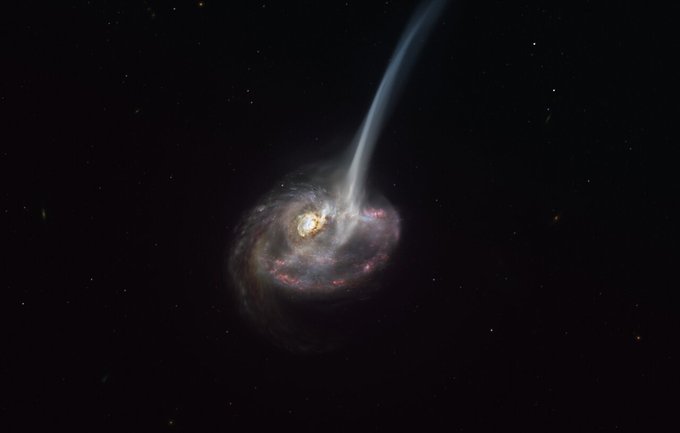Stars are among the most interesting puzzles in astrophysics.
🔗 https://t.co/bBmbsLiRSm
Credit: @ESO / T. Preibisch
This week’s Picture of the Week features DG121, an HII region — a cloud of ionised hydrogen — located in the constellation of Puppis (the Stern).
🔗 https://t.co/iYnuEshkts
Credit: @ESO
A galaxy caught dying? @ALMAObs sees a distant galaxy ejecting nearly half of its star-forming gas at a rate equivalent to 10,000 Suns worth of gas a year, causing the galaxy to lose its fuel to make new stars.
Credit: @ESO /M. Kornmesser
https://t.co/JXduGUEoya
ESO #Flashback: This relatively unknown wide-field view captures the spectacular celestial landscape around the central object Gum 15.
Credit: @ESO /Digitized Sky Survey 2 https://t.co/H4WrszBQLM
ESO #Flashback: OmegaCAM – the wide-field optical camera on ESO's #VST – captured the spectacular Orion Nebula and its associated cluster of young stars in great detail. Credit: @ESO / G. Beccari https://t.co/XT8D5meSsx
With our 2019 ESO #Calendar, stunning astronomical images together with breathtaking pictures of our telescopes and landscapes will accompany you next year, leaving you in celestial awe each month. https://t.co/Nzcht9YVkF
This artist's impression shows several of the planets orbiting the ultra-cool red dwarf star TRAPPIST-1. Credit: @ESO / M. Kornmesser https://t.co/qTczagvIpp
Planet Parade: this artist's impression video compares the seven planets orbiting the ultra-cool red dwarf star TRAPPIST-1 at the same scale. Credit: @ESO / M. Kornmesser https://t.co/7u3AmiXtOf









